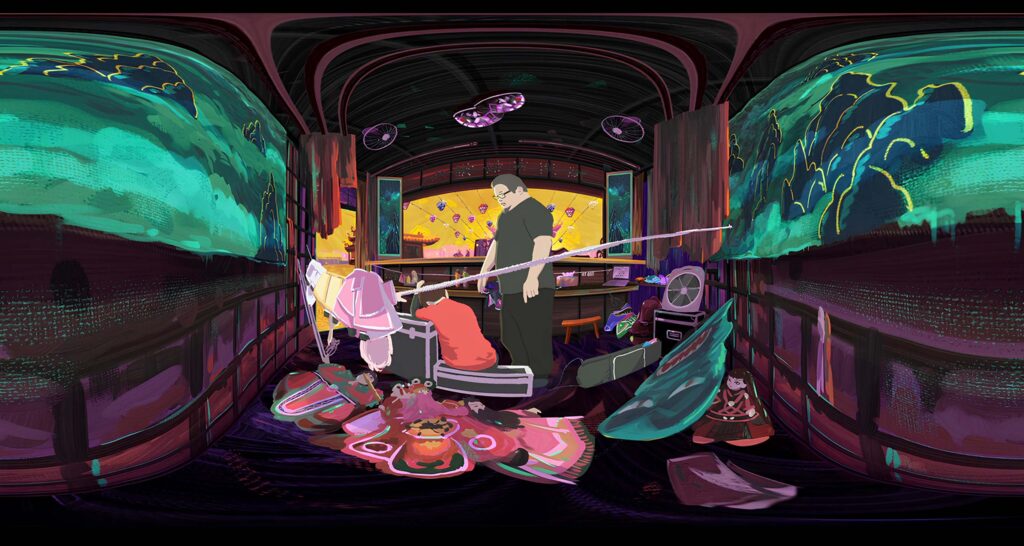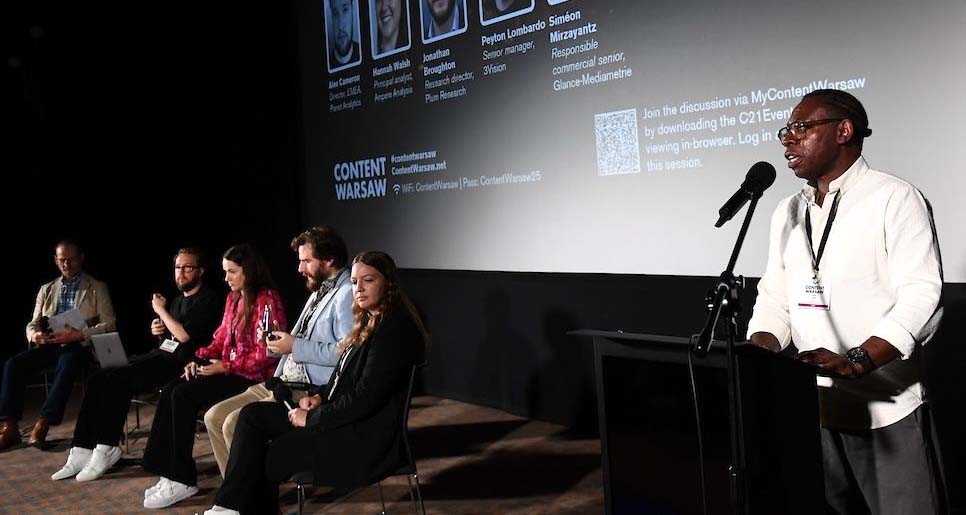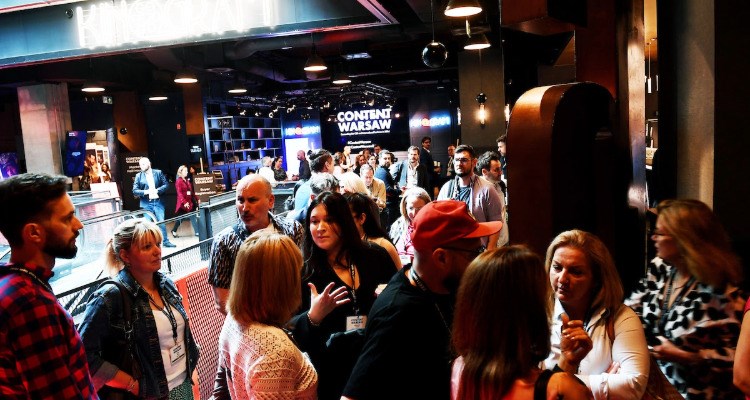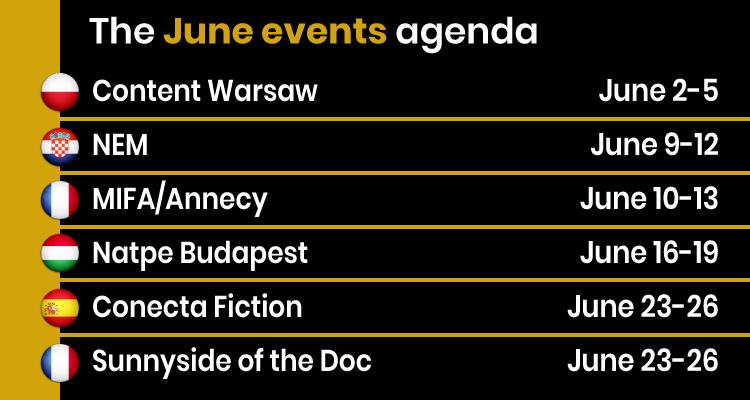
This is a very special month for the content industry, and for Prensario. There are six good European events that we cover in person with print copies, the same edition for all: Content Warsaw, NEM Croatia, MIFA/Annecy for kids, Natpe Budapest, Conecta Fiction for co-productions and Sunnyside of the Doc for docs. Two years ago we’ve been just in three of them. We develop three different teams to cover all these events in the same month. For the industry, it is a challenge to have so many events in Europe, in Summer, three focused on Central & Eastern Europe.
These so many events are not casual: if some years ago the medium shows went down and seemed that just the very big ones would survive, now there is a return to regional, local, niche events, as a way to find new, fresh people. Warsaw is held for the second time, the others have many years in the market. Usually when you attend them, you discover very good content communities each, most of the events are healthy. The content market has many varied spaces that many people don’t know.
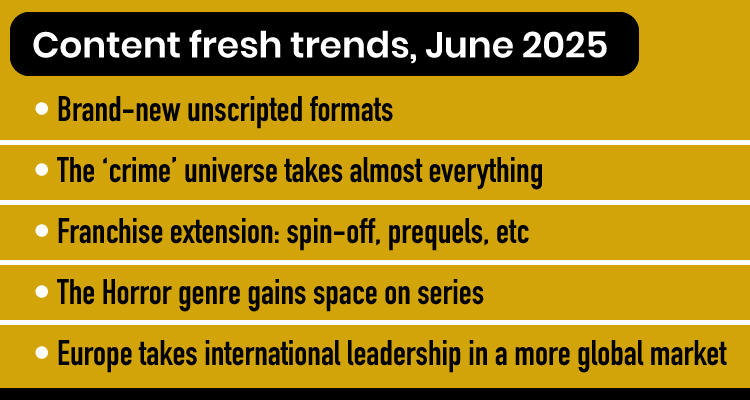
European content trends?
At London Screenings last February, from 10 big screeners Prensario interviewed —ITV, Fremantle, Banijay, BBC, etc— at least half agreed about a growing demand for brand-new unscripted formats. The sure classic successes will go on of course, but it is very good to have wider space to renew the programming offerings. In genres, there is a clear growth of adventure, survival realities, as we saw last Mipcom and again at many screenings in London. In scripted, unique, super natural stories continue on the move, while true crime, procedurals, keep strong mainly in broadcasters and pay TV channels.
At LA Screenings last month (Los Angeles) Prensario interviewed many European buyers and checked two main trends: first, most of everything is related to crime —true crime, procedurals, thrillers, factual, episodic & situational series, even comedies and ‘crime realities’— because it attracts everywhere. But this move is so strong, that there are some buyers that answered they were looking ‘something good but not crime’.
Second, there is a strong franchise extension, with the launch of many spin-off, prequels, sequels, remakes of famous brands, characters. Especially, spin-off of previous series. Many buyers claim for innovation, but everybody needs security in these so hard times. About genres specifically, the horror segment is on the rise among series, as a step ahead from thrillers. Also, the industry is wanting to handle more comedies, good vives contents.
About origins, considering London + LA, now the market is fully global, with American players mixing ventures with European titans most of the times. Australia, Canada, the Nordics, are now on the group. And it is touchable the emergent territories explosion, as good partners for major projects and even as a main source of funding, when the central markets are with severe budget reductions. Japan and Korea are now high-end options, but also other Asians, MENA, for sure Turkey, Israel. They were the main sponsors at MIPLondon and coproducers of many projects at London Screenings.
In UK in particular, there is a hard financing problem for producers, because networks are not paying any more the total production costs, just 50% of them. The rest must be solved with international and business twists… another tip to make the market more international, too.
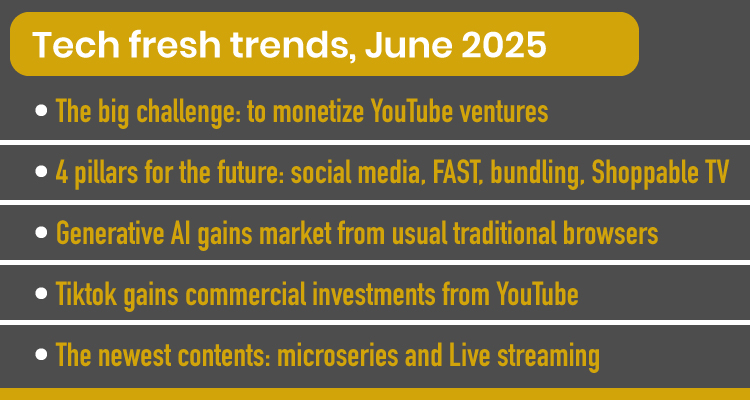
Content & technology, together
In the world but in Europe in particular, the future of content business is more and more related to technology. The basics don’t change —to tell good stories, strong characters, franchise development, etc.— but the delivery of contents is evolving and changing progressively. According to OMDIA, UK based consulting company, the main thing today in content business is how to generate monetization in YouTube, the Top Video Service of the world. Everybody has the chance of uploading contents, to generate channels, but to produce incomes or not is another story. One of the main suggestions is to take expert partners, that let save time and efforts to succeed.
Also, for the consulting company, there are 4 pillars for the future of business: social media, FAST/AVOD, bundling and shoppable TV. The first one is evident: Tiktok and Instagram are taking more and more share from the global advertising media pie. The second is easy too, because most of the distributors and broadcasters are launching FAST channels with their product —as at Pay TV in the past, but now on digital media. The broadcasters and pay TV operators, on the other hand, are turning into AVODs, based on advertising and performing as hubs for SVODs.
OMDIA says that bundling —to mix different SVODs in competitive packs— will take a quarter of SVOD business for 2029. And it sees a lot of potential in Shoppable TV from now: the chance of watching a series and to buy the clothes of the main actors or the gadgets that appear, at the same time. For this, right smart TVs and right apps are needed, but we are not far in technology.
Two more tech twists, now just from Prensario: generative AI is gaining the usual browsers at the moment of looking for information, because it is more reliable and checks the original sources. So, content generators are in a better situation from now. Second, Tiktok is gaining YouTube as channel for commercial demand. Instead of a Youtube video of 5 minutes, the companies prefer to generate five videos of one minute each for TikTok, because they get more awareness and feedback.
And two new tech-content genres: vertical microseries, with episodes of one minute each, to gain mobile audiences. Reelshort is the international leader and is making alliances with broadcasters, which are producing on themselves. Second, live streaming channels, just on real time. They are captivating many young audiences with youtubers and influences in talk, variety shows. They are loved by advertisers, which demand maximum segmentation.
Nicolás Smirnoff


